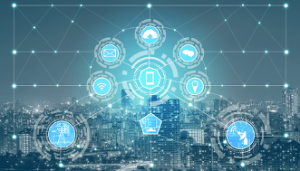
The events market was among the first industries to feel the impact of the coronavirus and will continue to feel its effects for months to come. GovEvents looked at the impact on the government events market and found that 22% of events listed on the site were canceled with no plans to reschedule in 2020. This means many missed opportunities for professional development, best practices sharing, and introduction to new technologies for public sector professionals. But as with many industries, the events market is quickly adapting and finding ways to provide education, development and collaboration for government professionals hungry to learn.
The Event Is Canceled, but Learning Is Not.
Organizations that had events planned for early March through this summer had to decide whether to cancel, postpone, or move their events online. For many, canceling their government events was not an option. They had enthusiastic government speakers with stories to share and an audience thirsty for information. In fact, 26% of live events on GovEvents scheduled for March 16 or later moved to virtual.
DataRobot's AI Experience conference was scheduled for March 19. This one-day, in-person event brought together government leaders to discuss how they were using and how they wanted to use artificial intelligence (AI) to further their mission. DataRobot had planned to live stream the event as early as February since they were already getting news that registrants would not be able to travel so they had a streaming company and equipment ready to go. On March 11, gatherings of more than 250 were prohibited and DataRobot already had 550 registered so they began moving to a virtual format. A few days later it became clear they would not be able to get the speakers to the venue either, so they pivoted once again and moved it all to a remote stream.



 The annual Federal Information Security Modernization Act (FISMA)
The annual Federal Information Security Modernization Act (FISMA)  At the beginning of 2020, the idea that the vast majority of the federal workforce would be working from home seemed like a remote (pun intended) reality. However, due to shelter-in-place orders across the U.S. this spring, much of the public sector work was being done from kitchen tables, guest bedrooms, and home offices. This fast pivot to remote work left agencies scrambling to get devices to employees now separated from their desks, develop reliable and secure connections to enterprise systems and applications, and re-engineer decades-old processes to accommodate fully virtual teams. Some examples include:
At the beginning of 2020, the idea that the vast majority of the federal workforce would be working from home seemed like a remote (pun intended) reality. However, due to shelter-in-place orders across the U.S. this spring, much of the public sector work was being done from kitchen tables, guest bedrooms, and home offices. This fast pivot to remote work left agencies scrambling to get devices to employees now separated from their desks, develop reliable and secure connections to enterprise systems and applications, and re-engineer decades-old processes to accommodate fully virtual teams. Some examples include: We've covered how
We've covered how 

